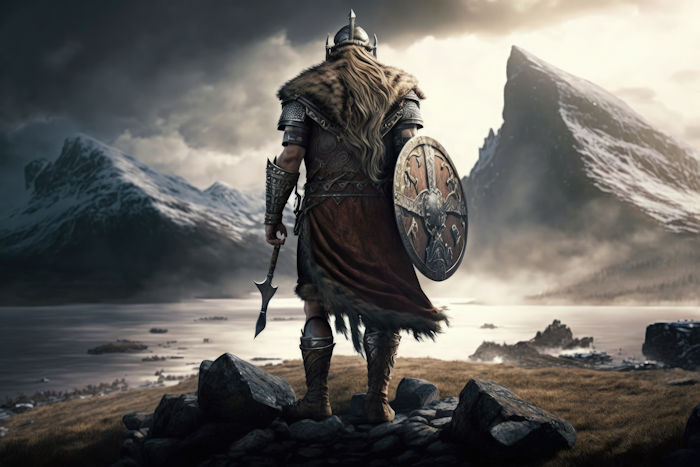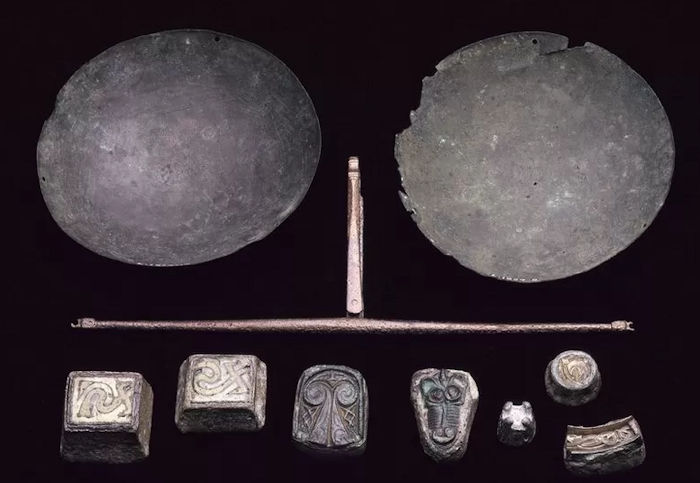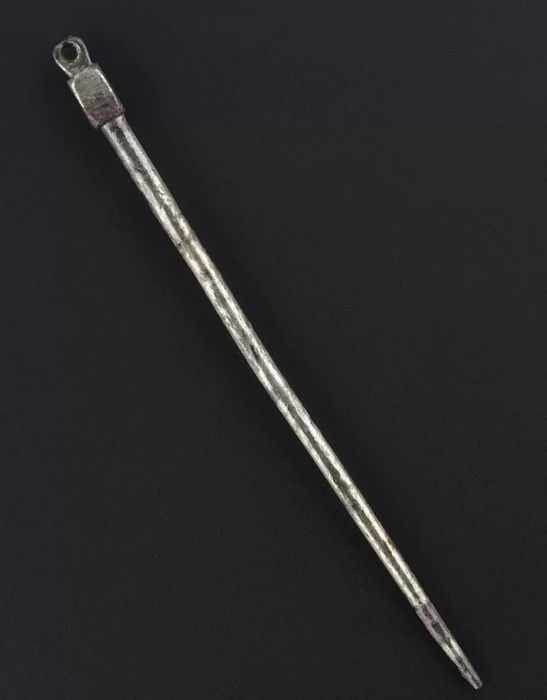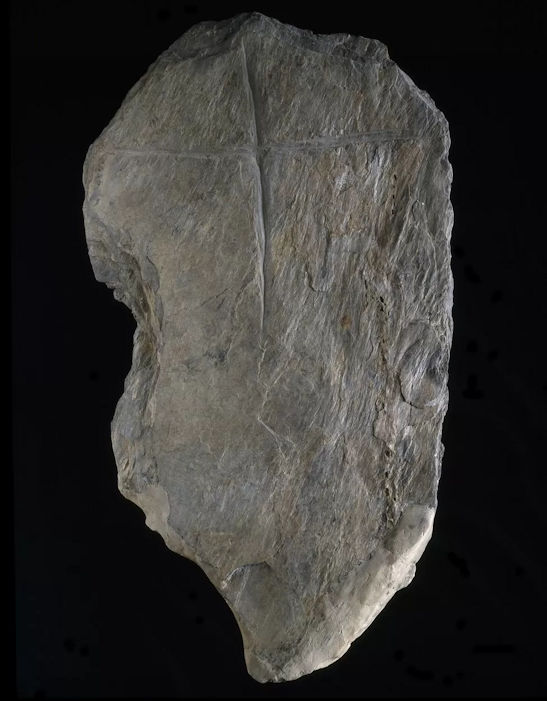Ellen Lloyd – AncientPages.com – Generally speaking, one must say that all Viking boat burials are rare because most of the notable burial finds throughout the Viking world are cremations. Archaeologists have unearthed Viking ship burials, but not in large numbers. Most unearthed Viking boat burials have been reported from Scandinavia and occasionally UK islands. Viking funeral traditions were complex, but based on archaeological evidence, it seems that the funeral boat or wagon was a practice that was reserved for the wealthy.

Credit: Adobe Stock – Deivison
What makes the Viking boat burial at Kiloran Bay in the Inner Hebrides exceptionally unique is that it remains Scotland’s single richest male Viking burial site to be found so far.
The Viking boat burial on the coastal meadow, called machair, at Kiloran Bay in Colonsay was discovered in 1882 “after rabbits, digging in the soft machair, scooped up some boat rivets.” 1
Based on the large number of Viking graves in Colonsay, it is evident the region was important to Norse warriors.
The first burial excavation was conducted by Sir M McNeill and W Galloway, and later in 1884, a new study was made of the burial.

Scales and elaborately decorated weights were found in the Viking grave. Credit: National Museum of Scotland
“On the surface the grave was marked by a rectangular enclosure of slabs set up edgeways, 15 ft. long and 10 ft. broad. All over the area within this space there were found a great quanтιтy of nails and rivets, mostly with parts of the wood still adhering to them, a certain indication of a ship-burial.” 2
Scientists suspected they had made a unique archaeological discovery, and they were right. The research team unearthed the skeleton of a man who had been buried next to his horse.

A silver dress pin was among the finds. Credit: National Museum of Scotland
The man’s body “had been placed resting upon its left side, with the head pointing toward the east, and the knees bent so that they touched the breast. Several objects of iron were discovered in the sand close to the skeleton, a two-edged iron sword, an axe, the boss of a shield, a cauldrom of iron, etc. Between the chin and the knees there was found a pain of scales, made of bronze, and close to them the balance and seven leaden weights. 2
There was also a selection of tools vital for trading “and a selection of coins, which dated the burial after the year 850.” 3
A boat had been placed over the top of the man’s grave chamber. The rich collection of burial goods suggested the Viking was of high status, possibly a chieftain well-equipped for fighting and trading.
In most respects, this find had the “characteristics of a regular Norwegian grave from the Viking Age. The ship, the horse, the weapons, and other objects correspond exactly to the requirements for a man’s grave in Norway a the same period.” 2
The archaeological discovery also offered important insight into the contacts between Scotland, Ireland, and the Viking homeland in the early tenth century.
However, scientists soon learned this particular Viking boat burial had a more complex story to tell.
Certain archaeological finds in the grave were unusual, suggesting there is still much to learn about pagan burial rites. This grave provided information about the interaction between the Pagan and Christian faith at the time of Viking settlement in Scotland.
“Two of the slabs forming the enclosure were marked with a cross, which though executed in a very primitive manner, must be supposed to have some religious significance in connection with the grave.” 2

Scientists were surprised to find Small slabs marked with a Christian cross at the pagan burial site. Credit: National Museum of Scotland
The placing of small slabs incised with crosses in the grave chamber continues to fascinate scientists. According to Prof James Graham-Campbell, an expert on pagan Norse graves of Scotland, this is not what we “would expect to find in a pagan burial rite.”
Prof Graham-Campbell points out that Colonsay, at the time, would have been a Christian island. Perhaps one of the Viking’s relations was a Christian and made a token gesture.
Written by – Ellen Lloyd – AncientPages.com
Copyright © AncientPages.com All rights reserved. This material may not be published, broadcast, rewritten or redistributed in whole or part without the express written permission of AncientPages.com
Expand for references
- Steven McKenzie – Revisiting one of Scotland’s rarest Viking burials, BBC
- Schetelig, H. (1906). Ship-Burial At Kiloran Bay, Colonsay, Scotland, Saga-Book, 5, 172–174.
- Viking Archaeology – Viking Ship Burial Kiloran Bay, Colonsay





